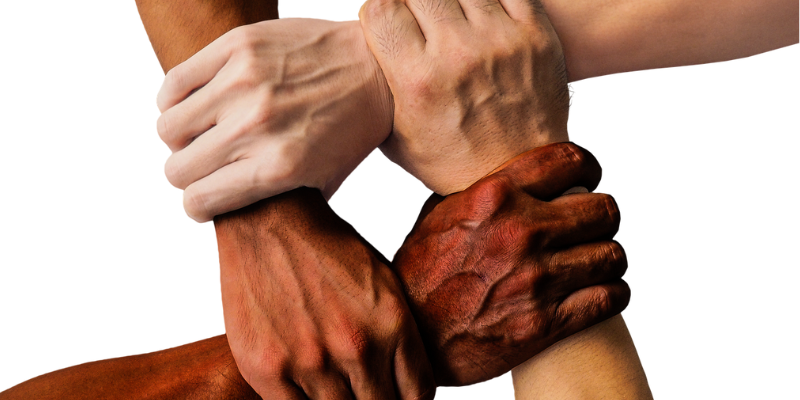Chioma Umahi
08 July 2024
No Comments
ADHD is a neurodevelopmental disorder that affects a person’s ability to pay attention, control impulses, and stay still or quiet at appropriate times. It’s not just about being hyperactive; ADHD involves challenges with focusing and managing behavior. ADHD can make it difficult for people to succeed in school, work, and social situations.
What is ADHD?
ADHD is a neurodevelopmental disorder that affects a person’s ability to pay attention, control impulses, and stay still or quiet at appropriate times. It’s not just about being hyperactive; it also involves challenges with focusing and managing behavior. ADHD can make it difficult for people to succeed in school, work, and social situations.
Myth 1: ADHD Isn’t Real
One of the biggest misconceptions about ADHD is that it isn’t a real condition. Some people believe that those with ADHD are just lazy or undisciplined. This is not true. ADHD is recognized by medical professionals and researchers worldwide as a legitimate disorder. It has been studied extensively, and brain imaging studies show that people with ADHD have differences in brain structure and function compared to those without the disorder.
Myth 2: Only Boys Have ADHD
Another common myth is that only boys can have ADHD. While it is true that ADHD is diagnosed more often in boys than in girls, it affects both genders. Girls with ADHD are often underdiagnosed because their symptoms can be different from those in boys. Boys are more likely to show hyperactive and impulsive behaviors, while girls may be more prone to inattentiveness and daydreaming. This difference in symptoms can lead to girls being overlooked or misdiagnosed.
Myth 3: ADHD is Caused by Bad Parenting
Some people believe that ADHD is the result of bad parenting or a lack of discipline. This is a harmful misconception. ADHD is a biological condition that is influenced by genetic and environmental factors, not parenting styles. While a supportive and structured environment can help manage ADHD symptoms, it does not cause or cure the disorder.
Myth 4: Kids with ADHD Just Need to Try Harder
People with ADHD often face criticism for not trying hard enough. This myth can be particularly damaging because it implies that the person with ADHD is to blame for their struggles. In reality, ADHD affects the brain’s ability to regulate attention and behavior, making it difficult for those with the disorder to “try harder.” Instead, they may need different strategies and supports to help them succeed.
Myth 5: ADHD Goes Away with Age
ADHD is often thought of as a childhood disorder that people grow out of. While some symptoms may change or lessen with age, ADHD can continue into adolescence and adulthood. Many adults with ADHD were never diagnosed as children and may struggle with symptoms throughout their lives. Recognizing and managing ADHD early can help improve outcomes for individuals as they grow.
What Does ADHD Look Like?
Understanding what ADHD looks like can help break down these myths. ADHD symptoms fall into three categories: inattention, hyperactivity, and impulsivity.
– Inattention: Difficulty focusing on tasks, following through on instructions, and organizing activities. People with ADHD might be easily distracted, forgetful, and prone to making careless mistakes.
– Hyperactivity: Excessive fidgeting, talking, and moving around. Those with ADHD might have trouble staying seated, feel restless, and act as if “driven by a motor.”
– Impulsivity: Acting without thinking, interrupting others, and difficulty waiting for their turn. This can lead to trouble in social situations and risky behaviors.
How is ADHD Diagnosed?
ADHD is diagnosed by healthcare professionals through a comprehensive evaluation. This involves gathering information from parents, teachers, and the individual themselves. The evaluation may include questionnaires, interviews, and observations. It’s important to rule out other possible causes of the symptoms, such as learning disabilities or emotional issues.
Managing ADHD
While there is no cure for ADHD, there are effective ways to manage the symptoms. Treatment often includes a combination of medication, therapy, and lifestyle changes.
– Medication: Stimulant medications like Ritalin and Adderall are commonly prescribed for ADHD. These medications can help improve focus and reduce hyperactive and impulsive behaviors. Non-stimulant medications are also available.
– Therapy: Behavioral therapy can help individuals develop coping strategies and improve their organizational skills. Family therapy and support groups can also be beneficial.
– Lifestyle Changes: Establishing routines, breaking tasks into smaller steps, and using tools like planners and reminders can help manage ADHD symptoms. Regular exercise, a healthy diet, and adequate sleep are also important.
Supporting Someone with ADHD

If you have a friend or family member with ADHD, there are many ways you can support them. Here are a few tips:
– Be Patient: Understand that ADHD is a real condition that can make certain tasks more challenging. Be patient and offer encouragement.
– Educate Yourself: Learn about ADHD and how it affects the person. This can help you understand their experiences and provide better support.
– Create a Supportive Environment: Help them establish routines and organize their space. This can make it easier for them to stay focused and manage their responsibilities.
– Encourage Professional Help: Encourage them to seek help from healthcare professionals. Therapy and medication can be very effective in managing ADHD symptoms.
Conclusion
Breaking down the myths and misconceptions about ADHD is essential for better understanding and supporting those who have the disorder. ADHD is a real and challenging condition that affects many youths, but with the right support and strategies, individuals with ADHD can thrive. By spreading awareness and compassion, we can help create a more inclusive and understanding environment for everyone.
We are an independent, non-partisan, non-governmental organization dedicated to rigorous research and advocacy on youth health issues in Sub-Saharan Africa. Our commitment is to examine public policies, support processes, and disseminate best practices.
- Donate the amount you like
- Stay tuned about cause





Leave a Reply